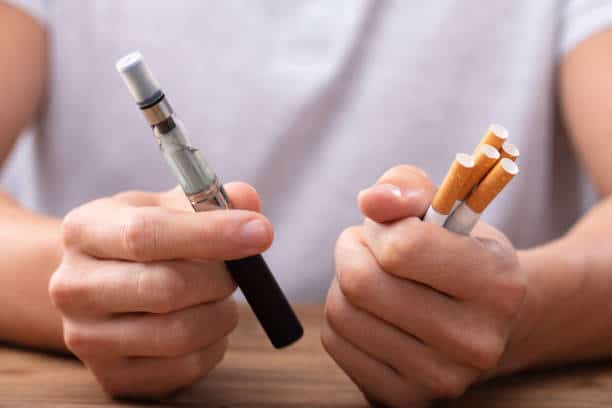Introduction
tobacco vs cigarette Many times, tobacco products and cigarettes are used in the same breath, while the latter are two different constituents of the larger concept of smoking. Although cigarettes are familiar products and types of tobacco consumption, tobacco itself has been used for centuries and in many ways and its use has different cultural, health and economical aspects. This article will explain the differences that exist in tobacco and cigarettes, and their impact on health, culture and society.
1. What Is Tobacco?
Tobacco is a plant that has leaves that contain nicotine, a substance that leads to addiction and causes changes in the human brain. Original to the Americas, tobacco is as old as it gets when it comes to how it can be consumed – chewing, snuffing or in pipes usually used during religious ceremonial activities. Currently, tobacco is cultivated in many countries and manufactured into several styles of tobacco products which include; cigarettes, cigars, tobacco to be used in pipes, and smokeless tobacco.
2. Types of Tobacco Products
Tobacco products do not have to be used in the same way and their effects on human health also differ. Below are some of the most common forms:
- Cigarettes: Tobacco that is chopped into thin strip, enclosed in paper incorporating other substances for taste and burning.
- Cigars and Cigarillos: Larger than cigarettes and holding more quantity of tobacco; generally puffed without even drawing the smoke into the lungs.
- Pipe Tobacco: Kine is the sort of tobacco which is to be used in a pipe.
- Smokeless Tobacco: Known as chew and spit tobacco and consumed without burning, it comprises chewing tobacco and snuff.
- Roll-Your-Own Tobacco: Servings of a tobacco which is used to prepare what is commonly referred to as hand rolled tobacco products.
- Hookah/Shisha: Preparation of tobacco in a particular c Nicaragua way for smoking through water pipe which is usually involved in social gathering.
3. How Cigarettes Are Made
Cigarettes on the other hand are manufactured products of tobacco, comprising cut tobacco, reconstituted tobacco and other ingredients that may include flavoring agents, humectant and burning rate promoters. Manufacturing involves several steps:
- Harvesting and Curing: Leaves:-Tobacco leaves are harvested, technically or physically stripped, and then dried, and cured, for flavor.
- Cutting and Blending: These cured leaves are chop into small sizes and combined with other materials or chemicals.
- Rolling and Wrapping: Tobacco is then rolled in the form of paper tubes making what is referred to as the cigarettes’.
- Packaging: Cigarettes because they are packed tightly inside sealed containers to increase their freshly.
4. Tobacco vs. Cigarettes: Key Differences
- Form: Tobacco can be cigars or raw tobacco or chewing tobacco or snuff but cigarettes are a manufacturing product.
- Additives: Chemical ingredients may be included in cigarettes to regulate the flavor, burning rate, and level of addictiveness while those in other tobacco products may not contain as many.
- Health Impact: While all kinds of tobacco products are dangerous to health, cigarettes were strongly associated with high rates of lung cancer and respiratory diseases.
- Cultural Context: Cigarettes are conventionally used singly and the rest are cigars and hookahs, for instance, they are more recurrent in occasions and ceremonies.
5. Health Risks of Tobacco
- Nicotine Addiction: All tobacco products contain nicotine, which is a very addictive substance.
- Cancer Risks: Tobacco is closely related with cancers of the mouth, throat, esophageal, and pancreas.
- Heart Disease: Cigarette smoking raises blood pressure and disturbs the rhythm of heartbeat thus problems of heart arise.
- Respiratory Diseases: COPD is one of the diseases accompanied by smoking tobacco products because they cause chronic respiratory illnesses.
- Other Risks: It is also linked with gum disease, tooth decay and oral cancers.
6. Health Risks of Cigarettes
- Lung Cancer: Cigarette smoking is the biggest culprit of lung cancer through the direct Inhalation of carcinogens.
- Chronic Respiratory Conditions: Such illnesses as emphysema and bronchitis are well associated with cigarette smoking.
- Secondhand Smoke: Second hand smoking causes the people around the smokers to have their respiratory health deteriorate, they are at higher risk to get lung cancer and heart diseases.
- Additives and Toxins: Filter cigarettes comprise hundreds of dangerous substances such as formaldehyde, benzene, and ammonia, and so on that makes cigarettes relatively toxic.
7. Cultural and Historical Context of Tobacco Use
Tobacco has been in existence for thousands of years beginning as an offering to the Native American spirits. When Europeans discovered tobacco in America, it ceased to be an American product alone and was produced the world over. For centuries tobacco has been consumed in various styles and during the twentieth century, cigarettes have dominated the market. Cigarettes became much more popular because of advertising, the fact they can be produced rapidly, and the image they portrayed.
Today tobacco use is universal but it differs from one region to another. Some societies offer hookah as their most popular type and while in other societies chewing tobacco and cigarettes are the most commonly used types. Many areas of the world are becoming anti-smoking in the culture since the dangers of smoking have been brought into the public consciousness.
8. Economic Implications of Tobacco and Cigarettes
- Global Industry Value: Tobacco has become a many-billion dollars business and business around the world that offer employment opportunities and generate government revenues in the form of taxes.
- Healthcare Costs: Diseases due to smoking engulf many resources which are a drain on people’s pockets and also government treasuries.
- Advertising and Regulations: Tobacco promotional policies include messaging, designs, and packaging as well as the manner in which tobacco products are marketed with a view of avoiding exposure to the public, and especially the youths.
- Agricultural Dependence: In some countries, the cultivation of tobacco is among the key economic activities, therefore; creating measures on the control of tobacco is even more challenging.
9. Efforts for Smoking Reduction and Tobacco Regulation
- Public Awareness Campaigns: Departments and organizations conduct awareness programmes because it is an injurious practice to smoke.
- Smoking Bans and Restrictions: Some territories have implemented the smoking restrictions in public places to prevent second hand smoke.
- Taxation: Tobacco taxes are fine because they are collected as a way of discouraging people from its use, with the belief that the percentage of users will decrease.
- Substitute Products: Nicotine products such as nicotine gum, patches and those that use electronic cigarettes to stop smoking are some of them.
- Health Warnings and Packaging Regulations: Smoking brands are usually hidden on the cigarette packs by means of large pictures depicting health risks and small logos, in many countries.
10. Conclusion
Tobacco and cigarettes are interrelated but separate elements within the matrix of the smoking phenomenon. Tobacco is not just cultured and has been used traditionally in societies, it comes in different forms but cigarettes are the current trendurbation in mass Society that is not only addictive but has severe health consequences. Even though people’s perception towards smoking has changed over time attributable to health concerns and legislation, the impact of tobacco in social and economical transformation cannot be nose-dived globally.
Analyzing the critical differences and health risks, it could be seen that escalating prevalence of tobacco and cigarettes have implications on society. The health effects caused by smoking and the ways to help people avoid it are the most important findings of the paper.




